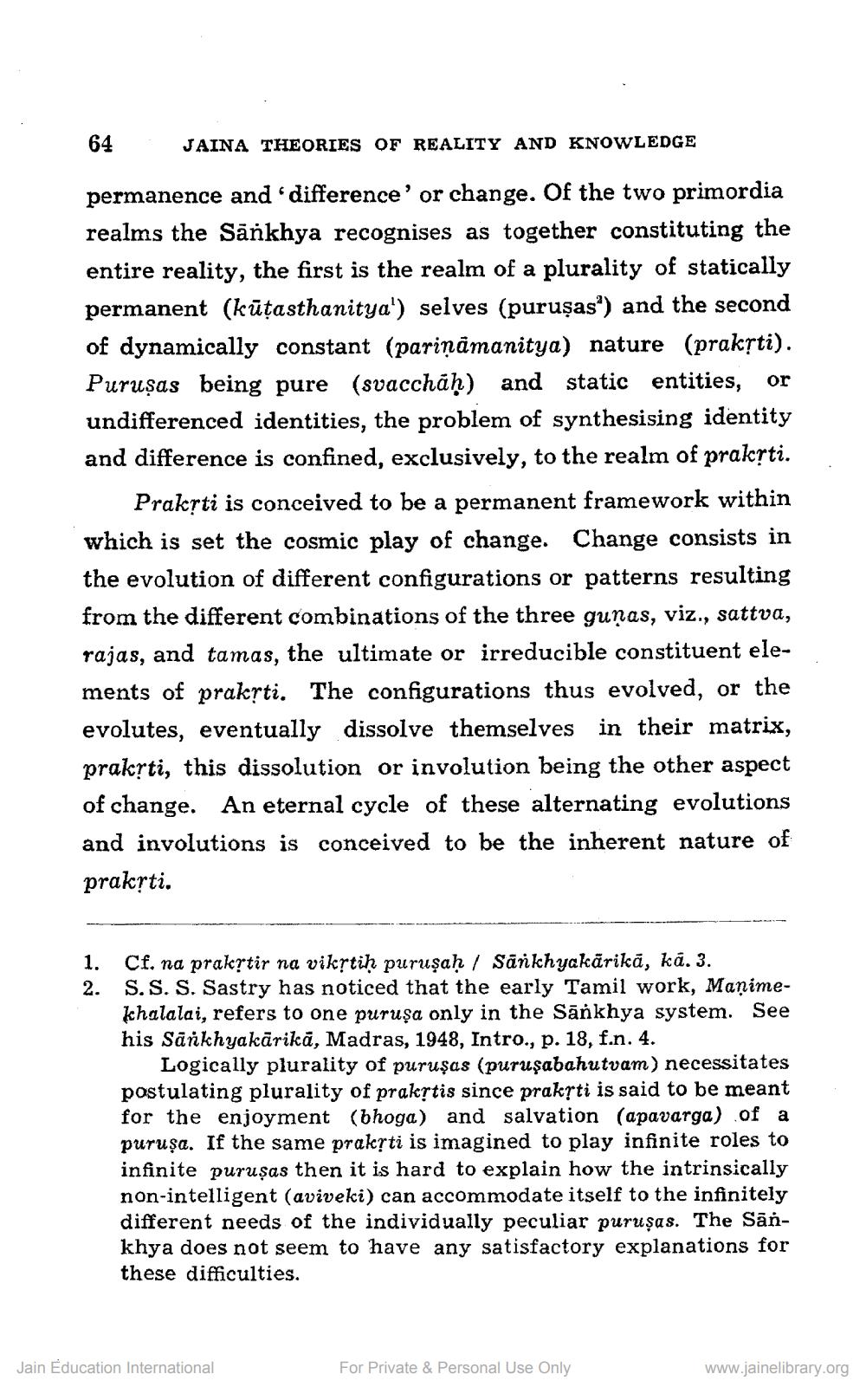________________
64 JAINA THEORIES OF REALITY AND KNOWLEDGE permanence and difference' or change. Of the two primordia realms the Sānkhya recognises as together constituting the entire reality, the first is the realm of a plurality of statically permanent (kūțasthanitya') selves (puruşas") and the second of dynamically constant (pariņāmanitya) nature (praksti). Puruşas being pure (svacchaḥ) and static entities, or undifferenced identities, the problem of synthesising identity and difference is confined, exclusively, to the realm of prakyti.
Prakệti is conceived to be a permanent framework within which is set the cosmic play of change. Change consists in the evolution of different configurations or patterns resulting from the different combinations of the three guņas, viz., sattva, rajas, and tamas, the ultimate or irreducible constituent elements of praksti. The configurations thus evolved, or the evolutes, eventually dissolve themselves in their matrix, prakrti, this dissolution or involution being the other aspect of change. An eternal cycle of these alternating evolutions and involutions is conceived to be the inherent nature of prakrti.
1. Cf. na prakstir na vikştih puruṣaḥ / Sänkhyakārikā, kā.3. 2. S.S. S. Sastry has noticed that the early Tamil work, Manime
khalalai, refers to one puruşa only in the Sankhya system. See his Sankhyakārika, Madras, 1948, Intro., p. 18, f.n. 4.
Logically plurality of puruşas (puruşabahutvam) necessitates postulating plurality of prakttis since praksti is said to be meant for the enjoyment (bhoga) and salvation (apavarga) of a puruşa. If the same praksti is imagined to play infinite roles to infinite purusas then it is hard to explain how the intrinsically non-intelligent (aviveki) can accommodate itself to the infinitely different needs of the individually peculiar puruşas. The Sankhya does not seem to have any satisfactory explanations for these difficulties.
Jain Education International
For Private & Personal Use Only
www.jainelibrary.org




